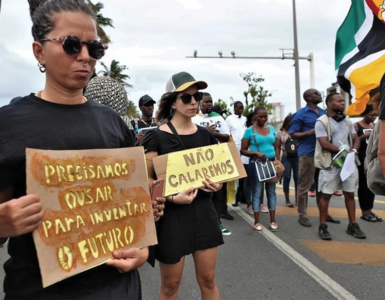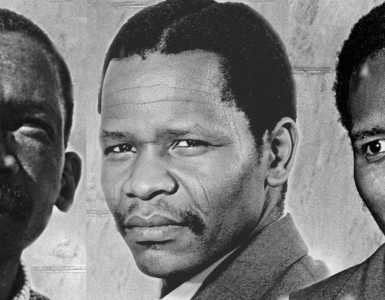LINEAGE:Mangcamane national council says the Dlaminis are not Swazis, but originally mathonga
The history of ESwatini has been deliberately hidThe history of eSwatini has been deliberately hidden from its people and the rest of the world.
History records that the present Dlamini leadership originally come from present-day Mozambique. They are not Swazis, but maThonga. History records (Webster, 1986) show that the height of the Thonga power was during the reign of Mabuda Tembe (Maputo and Maputaland in KZN are named after him). The consolidation of power in the area dislodged smaller clans like the Ngwane Dlamini who later founded the Swazi royal house (sic).
The Ngwane Dlaminis then trekked south to KwaZulu. Their migration is clearly evident from their own praises, ‘bacedza Lubombo ngekuhlehletela’ (they finished (walking down) Lubombo Mountains by marching). King Zwide wanted to kill their leader, Somhlolo Dlamini, but they escaped northwards to eSwatini during the reign of King Khabangobe Maseko, who gave them refuge. They called the true emaSwati, Makhandzambhili (those found ahead).
In the 1840s, Dingane sought refuge among the Ngcamane after killing the Boers. Knowing that they (Boers) could not flush out, Dingane among the Ngcamane, the Boers conspired with Somhlolo’s son, Mswati II, to murder Dingane in Swazi territory. Dingane was killed by the Dlaminis in what is today north KwaZulu Natal, eHlathikhulu, but was part of eSwatini then. The promised reward for Mswati II was land. When they went to claim their reward, the Boers told him to kill King Mgazi Maseko (Khabangobe’s son) and he would (Mswati II) get territory far away from the Zulus.
In the previous generation, Mswati II’s sister, Lambombotsi, had been offered to King Khabangobe as a wife. But the wise Khabangobe refused to marry her, giving an excuse of old age. King Mgazi (son of Khabangobe), feeling the pressure and being king, did not want to disappoint his refugee subjects, married the woman the Dlaminis had so wanted to dispose of.
The Dlamini refugees were so thirsty for power that they had expected King Mgazi to father the heir to the throne through their daughter. But she had committed numerous indiscretions with men such that the King had to get rid of her. The Dlaminis realised that they would never have royal blood, so they decided to carry out murderous plan presented to them by the Boers in 1840, the same year Dingane was killed.
Coincidence? King Mgazi was not killed in a war situation. He was tricked into join a hunting party and stabbed while hunting, and succumbed to his injuries a while later after that.
The Boers only used Mswati to get what then came to be known as the Transvaal and left him with the small piece of land now called eSwatini. That is how eSwatini became so small a country.
On assumption of the monarchy of eSwatini they called themselves emaSwati. Meanwhile, King Mgazi’s son, Sidinga, was sent into exile to the then Lesotho via the Free State, passing the border between what was Ligwa Vaal river, where he died.
Other Ngcamane parties fled in different directions to avoid detection. Hence there are the eMangcamane in Malawi under King Gomane III today (they could not pronounce ‘Ngcamane’ in Malawi, so it became ‘Gomane’, Zambia, Zimbabwe, the Free State and the Eastern Cape (amaMfengu).
Subsequent generations of Ngcamanes and the Maseko Kings fled into present-day Lesotho because of the advancing Boers (a further reason why Lesotho is this small too). Up to today, the true Swazi Royal family is still in exile in Lesotho and the under King Luhleko Maseko. A lot of evidence to the above is hidden in the caves of Ncabaningi, now called Ncabaneni, the headquarters of Maseko Kings on the western part of eSwatini. That is why there are a lot of Masekos on the western eSwatini (Bhunya, Mankayane, KaLuhleko, etc).
The Dlaminis also assumed the culture of emaSwati, like incwala (first fruit ceremony) and added their own tradition of kuphuma kwebemanti (fething sea water from Mozambique) and whatever they do with the water as part of the ceremony.
eSWATINI
The country was named by King Maphanga Maseko, apparently because regiment warriors were using sticks (tinswati) to practice for war. It was not named after Mswati as is popularly known. The geographic borders of the Ngcamane territory went as far as Springs (Johannesburg) Lydenburg and down the Lubombo Mountains to the east and Pongola River in the south, up to Kosi Bay.
The land the “ESwatini government” is claiming from South Africa does truly belong to eSwatini, but eSwatini does not belong to the Dlaminis. A few years ago, “Prince” Bhekimpi (late Prime Minister of eSwatini) laid a claim that Maputo in Mozambique belongs to eSwatini. In fact, he should have correctly said they, Dlaminis, belong to Maputo, not that Maputo belongs to eSwatini. King Sidinga was buried at Sheradon, Free State.
His descendants further migrated with the BaSotho when Boers advanced chasing Moshoeshoe. These were MoSotho, Dumakude, Griffiths and presently Luhleko II.
It is for this reason that the true Ngcamane Royal family is still in exile in Lesotho, where still lives Luhleko Maseko today. – Statement from MaNgcamane National Council.
REFERENCE SOURCES
• Linden, I, Some oral traditions from the Mase ko Ngoni, The Society of Malawi Journal, Vol. 24, No. 2 (July, 1971), pp. 60-73 https://www. jstor.org/stable/29778258
• Madise, Sunduzwayo. (20115). The Ngoni of Malawi (A History Revisited). SSRN Electron ic Journal. 10.2139/ssrn.2587050
• Maseko, J.M, (1998) “The return of the Ngcamane Swazi”, Ngcamane Swazi National Council
• Maseko, L., (2013), The full history of the Maseko clan. Times of Swaziland, 17/10/2013
• Webster, D, (1986),Tembe-Thonga Kinship : The Marriage of Anthropology and History, pp. 611-632 [https://www.persee.fr/doc/cea_0008- 0055_1986_num_26_1041_686]
The Maseko Nguni Kingship and its progression through time
1. Ndlovu Ntu (800 – 920 AD: The first Nguni King)
2. Khubonye Ntungwa Ndlovu (920 – 1010)
3. Maseko Khubonye Ndlovu (1009 -1100)
4. Mdandulukwane Maseko (1099 -1196)
5. Sidwabasiluthuli Maseko (1190 -1296)
6. Mafu Maseko (1200 – 1295)
7. Ntshangase Maseko (1240 – 1380)
8. Luhleko Maseko I (1370 – 1480)
9. Nsele Maseko (1450 – 1536)
10. Ngcamane Maseko I (1530 -1640)
11. Maphanga Maseko (1640 -1760: The father to Gomani I/Ngcamane II who established the Maseko Ngoni in Malawi)
12. Khabangobe Maseko (1740 -1820: Arrival of King Sobhuza I in Swaziland)
13. Mgazi Maseko (1790 – 1840: assassinated by King Somhlolo in 1840 and was the last authentic Ngcamane Swazi King) Royal generations who were born in exile (outside Swaziland):
14. Sidzinga Maseko I (1840 – 1902: first king to be exiled)
15. Msutfu Maseko (1870 – 1960: born in exile)
16. Sidzinga Maseko II (Dumakude) (1906 -16.1.1988: born in exile)
17. Griffiths Maseko (1936 -1991: was in Lesotho)
18. Luhleko Maseko II (born in1969, Lesotho, Crown Prince)
Source: JM Maseko






